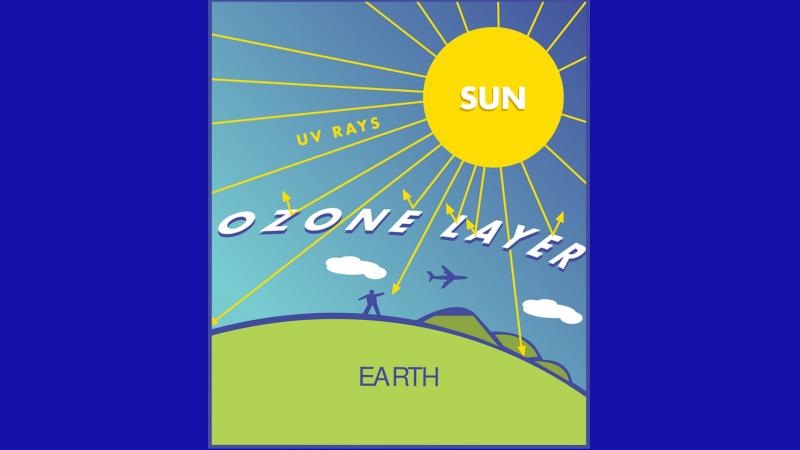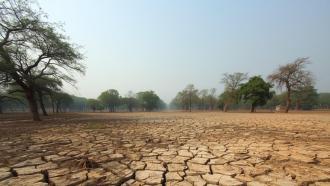
Without the quintessential ozone layer, which protects the Earth by absorbing the harmful ultraviolet radiations from the Sun, life may not have evolved the way it did. However, in recent decades, there was alarming news of the ozone layer thinning due to the use of ozone-depleting substances like chlorofluorocarbons (CFCs) used in refrigerators and air conditioners. This news prompted the signing of the Montreal Protocol in 1989 to regulate the use of ozone-depleting substances. Thanks to the stepped up efforts of many countries; the Antarctic ozone hole is on its way to recovery.
Scientists recognised the loss of ozone by studying the ozone layer above Antarctica and identified a giant ‘hole’ in the 1980s. In reality, there is no ‘hole’ that is entirely devoid of ozone; it is the decreasing volume of ozone in a column of air that is referred to as a 'hole'. When this volume, measured from ground to the top of the atmosphere has a value below 220 Dobson Units (DU), it becomes a cause for concern. The Dobson Unit is a measure of the ozone concentration. A column of air with one DU ozone concentration would contain about 2.69x1016 ozone molecules for every square centimetre of area at the base of the column. The average thickness of the ozone layer is about 300 DU.
In a recent study, researchers from the Indian Institute of Technology Kharagpur have provided more evidence to support that the ozone hole is recovering by analysing data from ozonesondes and satellites over Antarctica. An ozonesonde is a balloon-borne instrument for measuring atmospheric ozone. The device has significant design contributions from renowned Indian scientist Anna Mani. The current study, published in the journal npj Climate and Atmospheric Science, examined data from ten different stations in Antarctica, including India’s research station Maitri, for the period between 1979 and 2017.
The researchers observed significant changes in the ozone loss saturation layer—a stretch in lower stratosphere between 13–21 km, where there is a near-zero concentration of ozone. The data showed that loss of ozone started in the early 1980s, and worsened to a negligible amount of ozone for the first time in 1985. Subsequently, an almost complete ozone loss recurred in 1987 and continued during the following winters, except for the winters of 1988 and 2002, which were warmer than the rest. However, during 2001-2017, although there was continued ozone loss, it was less frequent than earlier and the ozone concentration gradually increased.
“This is the emergence of an important milestone in ozone recovery”, says Prof. Jayanarayanan Kuttippurath from IIT Kharagpur, who is also the lead author of the study.
Interestingly, the researchers also observed that the loss of ozone was not uniform at all altitudes. A complete loss of ozone began at the height of about 12 km and continued until 22 km into the atmosphere from the surface of the Earth. The whole stretch of 13-16 km encountered a recurring loss of ozone. The satellite measurements corroborated with the data from ozonesonde and showed a similar pattern.
“This change in the vertical distribution of ozone is significant for ozone loss saturation—a unique phenomenon of the complete loss of ozone at altitudes between 12 and 21 km.”, says Prof. Pandey, who is also the founder director of National Centre for Polar and Ocean Research, adding that “any change in the vertical distribution of ozone has both short and long-term implications for climate change in the southern hemisphere.”
The researchers attribute the change in the ozone layer to the three-decades-old Montreal Protocol. Their analysis shows an evident decline in the frequency of complete loss of ozone layer after the implementation of this protocol. The findings also support the recent report by the World Meteorological Organization (WMO) and the United Nations Environment Programme (UNEP) that the ozone hole will completely heal by 2060.
Although it is hard to stay optimistic in a world dogged by several environmental problems, the healing of ozone hole is a reason to cheer.






